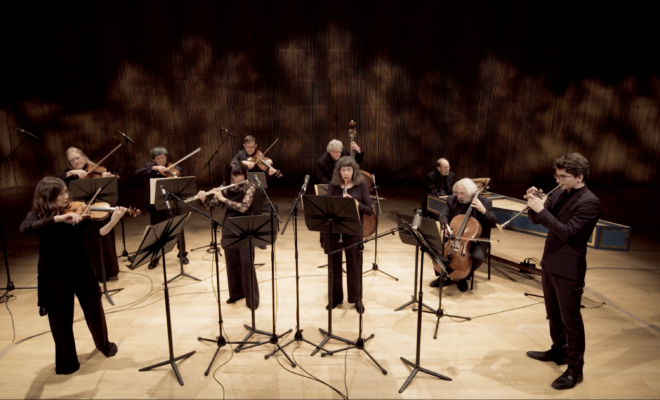The second “Brandenburg” Concerto has a most unusual solo ensemble in Bach’s presentation manuscript, consisting of trumpet, flute, oboe, and violin. We tend to think of the trumpet as a particularly loud instrument and the recorder as very soft, though the instruments of Bach’s day would have been better balanced in terms of volume, and in the modest-sized rooms in which this music was performed, the flute would project quite well. While it is possible that Bach composed for these four solo instruments simply because they were there, it is equally likely that he chose them precisely for their diversity. The fact that each sounds so different from the other makes it easier to keep track of their doings throughout the concerto.
The opening movement of the second concerto is astonishingly rich in the inventive ways Bach treats his material and brings the four principal soloists into action with one another and with the rest of the ensemble. At climactic moments, when every part is playing a different thematic idea, the ease with which the ear distinguishes the sound of the four soloists is a real advantage to following this elegant game.
© Steven Ledbetter
Program
Johann Sebastian Bach
Brandenburg Concerto No. 2, BWV 1047, mvmt I

